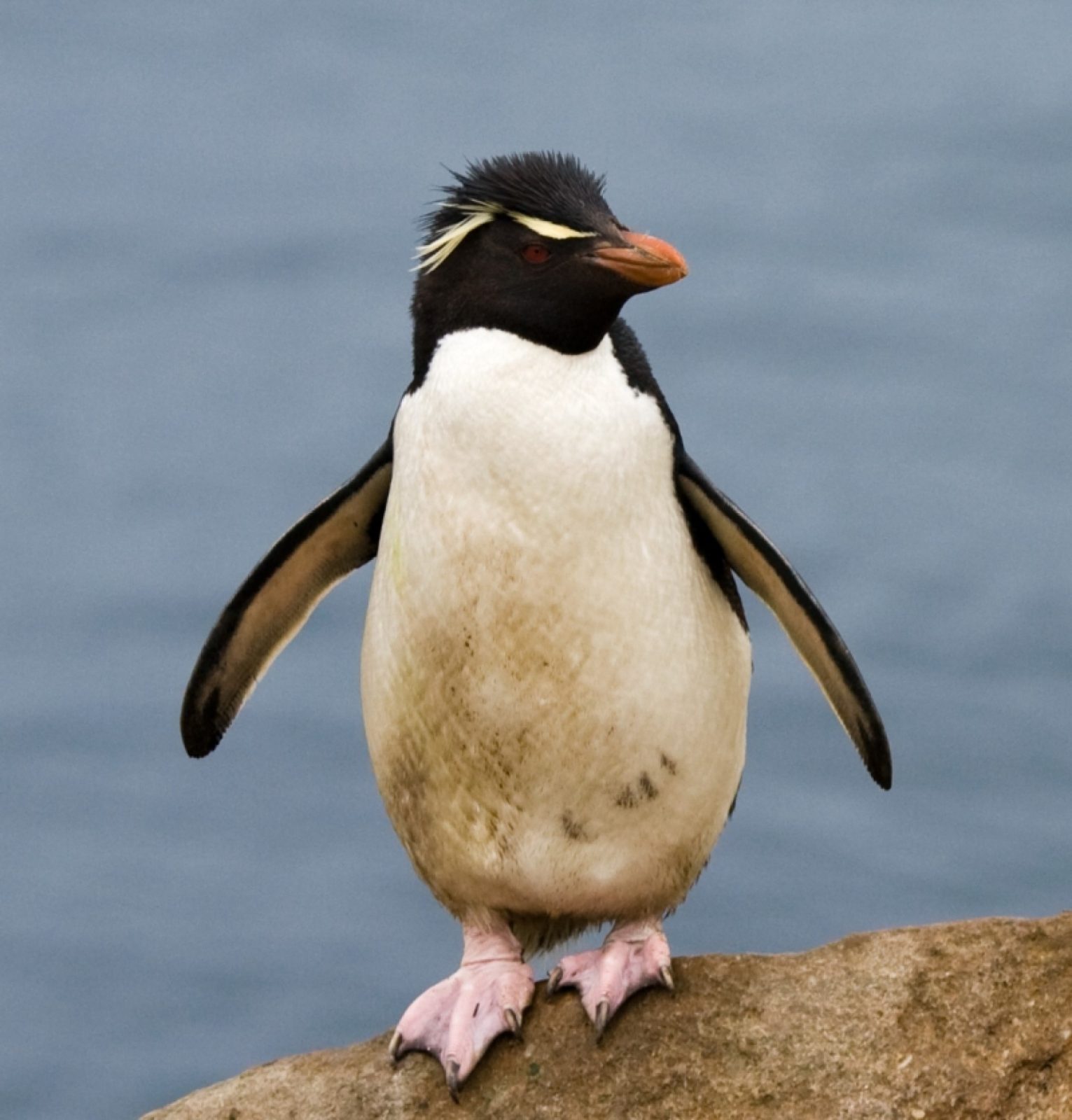
Southern Rock-hopper penguin
Although only sometimes considered separately to the Norther Rock-hopper penguin, this one lives on sub-antarctic islands, as well as the Southern coasts of South America.
There are 2 recognized subspecies:
E. c. filholi Hutton, FW, 1879 – Kerguelen Islands and subantarctic islands of New Zealand
E. c. chrysocome (Forster, JR, 1781) – Cape Horn to the Falkland Islands
This species overlaps with the Macaroni penguin species, and there have been a handle of hybrids.
It is 45cm-58cm and weigh between 2 and 3.4kg. Extra large ones have been recorded, close to 5kg.
The global population is roughly 1 million breeding pairs. About two-thirds of the global population belongs to E. c. chrysocome which breeds on the Falkland Islands as well as on islands off Patagonia. These include most significantly Isla de los Estados, the Ildefonso Islands, the Diego Ramírez Islands and Isla Noir. E. c. filholi breeds on the Prince Edward Islands, the Crozet Islands, the Kerguelen Islands, Heard Island, Macquarie Island, Campbell Island, the Auckland Islands and the Antipodes Islands. Outside the breeding season, the birds can be found roaming the waters offshore their colonies.
These penguins feed on krill, squid, octopus, lantern fish, mollusks, plankton, cuttlefish, and mainly crustaceans.
A member of this species called Rocky, from a Norway aquarium, lived for 29 years and 4 months, which is the longest recorded living member of this species (other species have far longer lived penguins.
Although 2 eggs are usually laid, more often than not, one of these is abandoned. The egg takes 36 days to hatch, and then brooded for another 26 days after hatching.
It is classed as vulnerable, with the population having declined by 1/3 in the last 30 years.
This is one of the easiest penguins to see as a tourist, and we hope to add plenty of contacts to help you see this species. These will appear at the bottom of the page. Should you wish to list your services, click here to add your details, it is a quick and simple process. It costs nothing to join, we merely take a commission on business that we find you. Our aim is to simplify wild travel, so that more people will do it, or perhaps fit in wild days during more normal trips.
Below this, is a video on this species. Below that, is a list of articles that have been written on this species (there may be none at the time, but we are eager to list articles from people involved in tourism or conservation(join as a member, we would love to help you spread word about interesting discoveries you are making)).
Under this, we will include all the links we have to help you see this species in the wild.